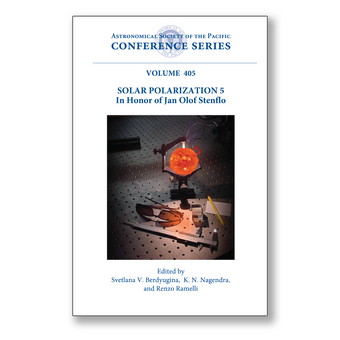Vol. 405 – Solar Polarization 5: In Honor of Jan Olof Stenflo
Your purchase of this volume includes a printed copy and electronic access. With your purchase of this title online, you will receive email instructions on how to access the e-Book version. If you wish to use our printable order form and mail or fax it to us, you will need to include your email address on this form in order to receive electronic access to the purchased volume(s).
Volume CS-405
Editor(s): Svetlana V. Berdyugina, K. N. Nagendra, and Renzo Ramelli
Print ISBN: 978-1-58381-690-5
e-Book ISBN: 978-1-58381-691-2
Published: 2009
SPW5 is the 5th in a series of international solar polarization workshops initiated more than a decade ago. The aim of this workshop was to explore in depth the physics and origin of polarized radiation in the solar atmosphere and its use for understanding the Sun. Great advances have been made in recent years in the area of high resolution spectro-polarimetry. New results in the quantum theory of polarized light scattering in the presence of magnetic and electric fields now2 help the interpretation of a wealth of data from new major solar telescope facilities and novel polarimeter systems. This workshop dealt with the theory of polarization physics, observational advances, and the efforts to develop novel instrumentation for advanced polarimetry. Theoretical contributions addressed molecular physics, the still enigmatic quantum aspects of the Second Solar Spectrum, and polarized radiative transfer in multidimensional, magnetized, and scattering atmospheres. The observational contributions dealt with the behavior of polarized spectral structures in the presence of magnetic fields and the behavior of the Zeeman and Hanle effects and their diagnostic use in determining the fine structure of solar magnetic fields. Connections between solar and stellar polarimetry and magnetic fields were explored. Several new telescope projects related to polarimetric instrumentation, and facilities for ground and space-based observatories were discussed. Recent works on coronal, infrared, and radio polarimetry were also presented.
For more information about this publication and other ASP Conference Series Proceedings, click here (a new browser window will open).


